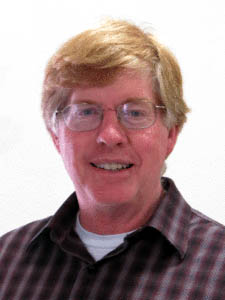Take a Hike … with Mike Monroe: Learning in Yosemite about friendship between Charles Kellogg and John Muir
Published in the August 24 – September 6, 2016 issue of Gilroy Life
By Mike Monroe

Mike Monroe
As I discussed in the last issue of Gilroy Life, Charles Kellogg and John Muir had a close friendship that effected their environmental efforts.
Kellogg was a native Californian born in Plumas County in 1868. For much of his youth he lived in upstate New York with his aunt and uncle.
It was during his brief college career that he was discovered to have the extraordinary ability to sing bird calls. He did not whistle, rather his voice was able to produce an unbelievable range of sounds including pitches that could not detected by the human ear. This unique talent propelled him into a famous international concert and recording career. He discography at Victor Records is substantial.
Kellogg and Muir had several occasions where their paths crossed. In his book, Kellogg relates that when he “met that great Californian for the first time, he felt he represented the craigs and spaces of the mountains he so loved.” Kellogg referred to Muir as “Saint John of the Mountains.”
On one visit to Yosemite, Kellogg hiked from Sonora through Tuolumne Meadows and Hetch Hetchy, a distance of more than 100 miles to share an Awahnee campfire with Muir.
They talked about Muir’s beloved Yosemite and the beauty of Hetch Hetchy. Muir’s eyes filled with tears because, as Kellogg recalled, political vandals were proposing to dam the entire Hetch Hetchy valley and use the water for the “dear babies of San Francisco.” “Yes,” Muir said with vehemence. “They would drown the valley and blot out all that beauty and the politicians would divide the plunder.”
Muir and the Sierra Club waged a fight to protect Hetch Hetchy Valley. The issue was that San Francisco was recovering from the 1906 earthquake and needed both a water supply and hydro-power. Hetch Hetchy was an integral part of Yosemite National Park, and Muir was determined not to allow the taking of protected national lands for the convenience of San Francisco.
In 1913, the same year that Kellogg built his hillside cabin in Morgan Hill, and after a seven-year struggle, the Raker Act authorized by Congress and signed into law by President Woodrow Wilson allowed the Hetch Hetchy Valley to be flooded. The construction of the O’Shaughnessy Dam was begun in 1919 and the reservoir created and filled in May 1923.
The impassioned perspectives about how to utilize public lands still are with us today. Gifford Pinchot, the chief forester for the Department of Agriculture at the time, espoused the concept of conservation which said that a determination needs to be made as to the greatest good for the use of our natural resources.
Muir, on the other hand, argued vigorously, challenging the public and the politicians to see more than just the economic value of land and water. With his whole being, he advocated for the preservation of “holy temples and glorious landscapes” as vital for the human psyche and as a means to ensure that plant and animal species would not wiped out in the name of progress.
At their Awahnee campfire meeting, Muir asked Kellogg to demonstrate how to make a flame from the friction of two sticks being rubbed together. Muir and everyone else were amazed when the fire blazed out. In return Kellogg asked Muir about an idea for a children’s story that featured, in the lead role, a frog by the name of Peter Jump. Muir had been re-telling the story of his befriending a small dog, Stickeen, during his 1880 tour of the glaciers in Alaska.
It was a classic dog tale. Muir wrote: “I have known many dogs, and many a story I could tell of their wisdom and devotion; but to none do I owe so much as to Stickeen.” Muir was much more of a writer than Kellogg, but both would say that they found writing to be quite the chore.
The common bond and message that all people share who care about the wonders of our natural world is that love is the foundation and the guiding force for our relationship with nature. The great naturalists knew this — John Muir and Charles Kellogg included – and that is their lasting legacy for us. Celebrate America’s national parks and show your gratitude for all that they represent for our nation.
Keep on sauntering!
Gilroy resident Mike Monroe is a Morgan Hill business owner and naturalist. He is a docent for Santa Clara County Parks.
